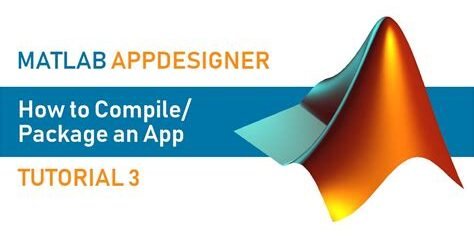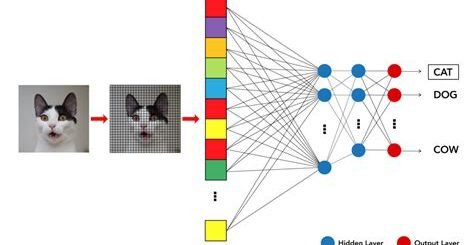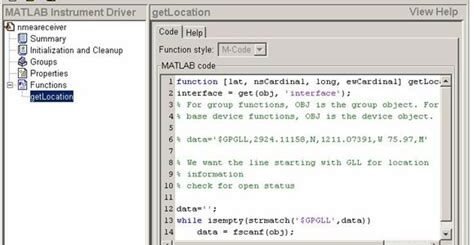Image Segmentation in Matlab
Are you looking to dive into the world of image processing and analysis in Matlab? One of the fundamental techniques in this field is image segmentation, a process of partitioning an image into multiple segments to simplify and/or change the representation of an image. In this blog post, we will explore the concept of image segmentation, its significance in Matlab, various techniques used for image segmentation, implementation of these algorithms in Matlab, and how to evaluate the results effectively. Whether you are a beginner looking to grasp the basics or a seasoned Matlab user seeking to enhance your skills in image processing, this blog post will provide you with a comprehensive understanding of image segmentation in the Matlab environment. So, let’s jump in and explore the world of image segmentation in Matlab!
What is Image Segmentation?
What is Image Segmentation?
Image segmentation is the process of dividing an image into different segments to make it easier to analyze. This technique is widely used in various fields such as medical imaging, object recognition, and computer vision. It helps in identifying different objects within an image and separating them from the background. Image segmentation plays a crucial role in understanding the content of an image and extracting meaningful information from it.
In image segmentation, the goal is to simplify an image to more meaningful and easier to analyze segments. This process is essential for tasks such as object recognition, scene understanding, and medical imaging. By dividing an image into different segments, it becomes easier to extract objects and their features, which is beneficial for various applications.
There are several methods used for image segmentation, including thresholding, edge detection, and region-based segmentation. Each of these techniques has its own advantages and drawbacks, and the choice of method depends on the specific requirements of the application. Regardless of the technique used, the ultimate goal of image segmentation is to partition an image into meaningful segments that can be further analyzed and processed.
Overall, image segmentation is a fundamental process in the field of image processing and computer vision. It is an essential step in understanding the content of an image and extracting valuable information from it. With the advancement of technology, new techniques and algorithms for image segmentation continue to emerge, further improving the accuracy and efficiency of this process.
Importance of Image Segmentation in Matlab
Image segmentation is a crucial process in the field of image processing, particularly in the context of Matlab. This technique involves partitioning an image into multiple segments to simplify the representation and make it easier to analyze. The importance of image segmentation in Matlab cannot be overstated, as it plays a vital role in various applications such as object recognition, medical imaging, and satellite imagery analysis.
One of the key reasons for the significance of image segmentation in Matlab is its ability to enhance the accuracy and efficiency of image processing algorithms. By segmenting an image, it becomes possible to isolate specific regions of interest and apply different processing techniques to each segment, leading to more accurate results. This is especially critical in tasks such as medical image analysis, where the precise identification and analysis of distinct structures within the image are of utmost importance.
Furthermore, image segmentation in Matlab is essential for feature extraction and pattern recognition. By segmenting an image into meaningful regions, it becomes easier to extract relevant features and patterns, which can then be used for various applications such as object detection, image classification, and content-based image retrieval. These capabilities are invaluable in fields like computer vision, remote sensing, and industrial inspection.
Another aspect that highlights the importance of image segmentation in Matlab is its role in facilitating the development and evaluation of new algorithms. Researchers and engineers often rely on image segmentation to create ground truth data for testing and validating their algorithms. Moreover, the ability to visualize and evaluate the results of image segmentation is critical for refining and improving algorithm performance, making Matlab an invaluable tool for this purpose.
Different Techniques for Image Segmentation in Matlab
Image segmentation is a crucial step in image processing, as it involves dividing an image into multiple parts or regions. In Matlab, there are various techniques that can be used for image segmentation, each with its own advantages and limitations.
One common technique for image segmentation in Matlab is thresholding, which involves setting a pixel value to either black or white based on whether it is above or below a certain threshold. This technique is simple and easy to implement, but it may not be effective for images with varying lighting conditions or complex backgrounds.
Another popular technique is edge detection, which highlights the edges of objects in an image. Matlab offers several algorithms for edge detection, such as the Sobel and Canny edge detectors. While edge detection can be effective for certain types of images, it may not work well for images with low contrast or noisy backgrounds.
Clustering is yet another technique for image segmentation in Matlab, which involves grouping pixels into clusters based on their similarity. The k-means clustering algorithm is commonly used for this purpose, as it can effectively segment images into distinct regions based on color or intensity.
Implementing Image Segmentation Algorithms in Matlab
Image segmentation is a crucial step in image processing, as it involves partitioning an image into multiple segments to make it easier to analyze. In Matlab, implementing image segmentation algorithms is a common task for researchers and engineers in various fields such as medical imaging, remote sensing, and computer vision.
One of the most popular techniques for implementing image segmentation in Matlab is the ‘K-means clustering algorithm’, which is used to partition N observations into K clusters. This algorithm is widely used due to its simplicity and effectiveness in identifying distinct groups within the image. Another commonly used algorithm is the ‘Watershed transform’, which treats the image as a topographic surface and separates it into regions of low and high intensity.
When implementing image segmentation algorithms in Matlab, it is important to consider the specific requirements of the application, such as the type of images being analyzed and the desired level of segmentation accuracy. Matlab provides a comprehensive set of functions and tools for developers to experiment with various algorithms and fine-tune the segmentation process to achieve optimal results.
Furthermore, evaluating the results of image segmentation in Matlab is an essential aspect of the process, as it allows developers to measure the accuracy and reliability of the segmentation algorithms. This involves comparing the segmented image with ground truth annotations, assessing metrics such as precision and recall, and iteratively refining the algorithms to improve their performance.
Evaluating the Results of Image Segmentation in Matlab
When it comes to image segmentation in Matlab, the evaluation of the results is a crucial step in determining the accuracy and effectiveness of the segmentation process. There are several metrics and techniques that can be used to assess the quality of the segmentation results, and these can provide valuable insights into the performance of the segmentation algorithm.
One common method for evaluating the results of image segmentation is through the use of quantitative measures, such as precision, recall, and F1 score. These measures can be used to assess the extent to which the segmented regions align with the ground truth, and can provide a quantitative assessment of the accuracy of the segmentation results.
In addition to quantitative measures, visual inspection of the segmentation results can also be a valuable evaluation tool. By visually comparing the segmented regions with the original image, it is possible to assess the quality of the segmentation in terms of factors such as boundary accuracy and region homogeneity.
Another important aspect of evaluating the results of image segmentation in Matlab is the consideration of specific application requirements. Depending on the intended use of the segmentation results, different evaluation metrics and techniques may be more relevant. For example, in medical imaging applications, the detection of specific anatomical structures may be of primary importance, and evaluation methods can be tailored to prioritize the accurate delineation of these structures.


